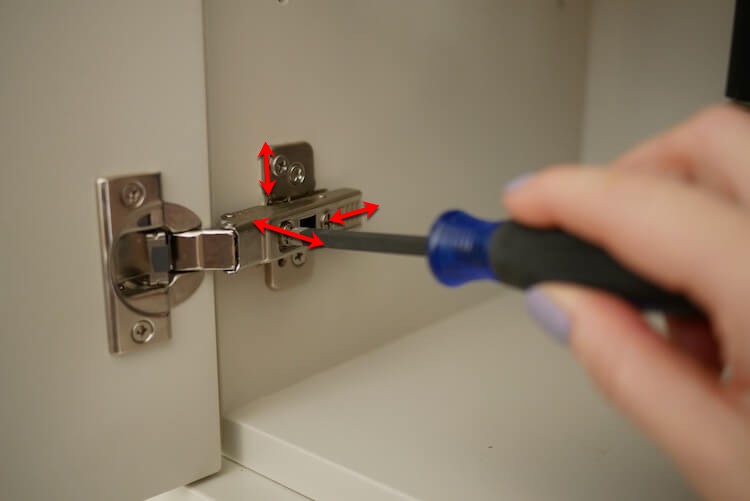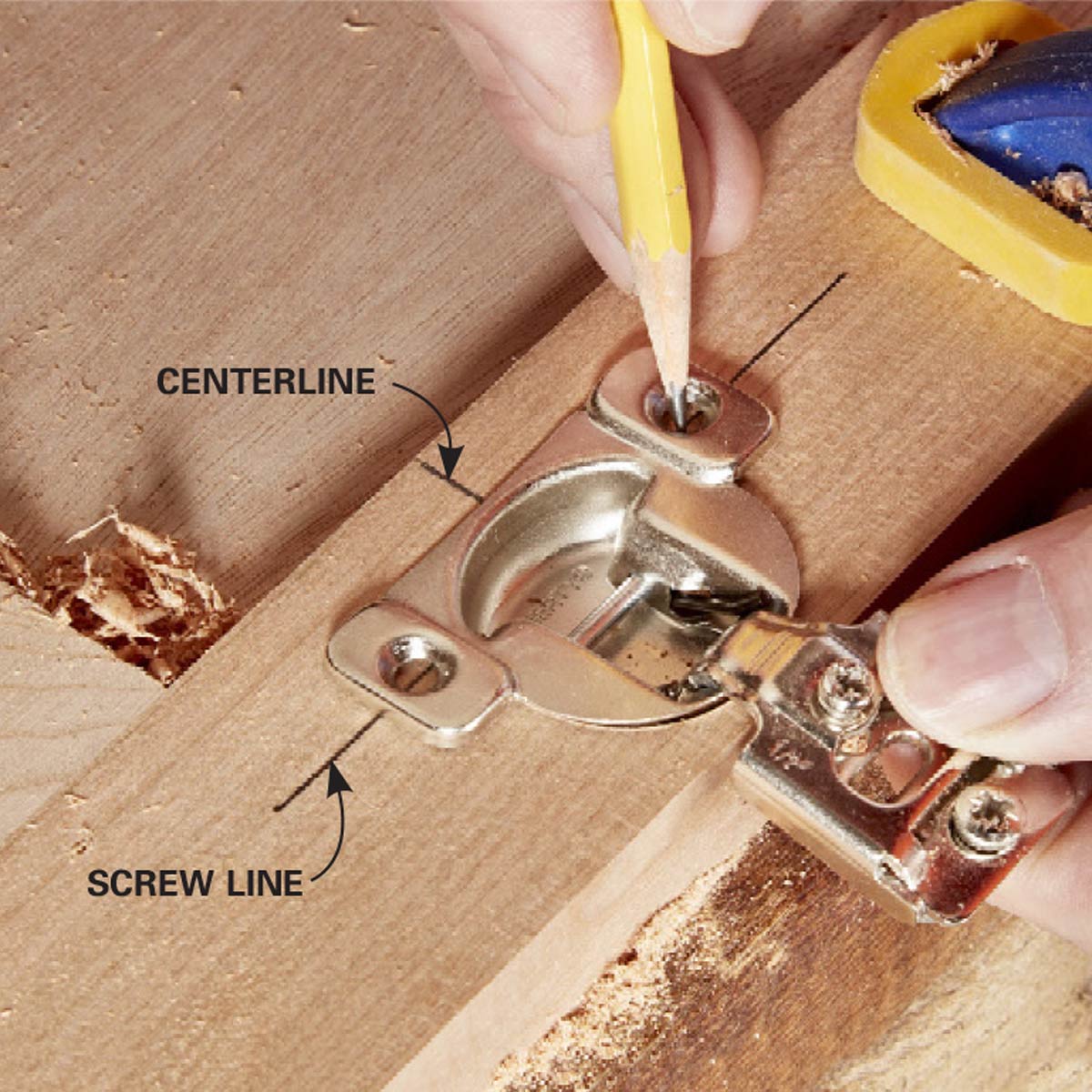Choosing the Right Hinges

Selecting the appropriate hinges is crucial for ensuring your cabinet doors function smoothly and last for years. The type of hinge you choose will depend on the weight of the door, the style of the cabinet, and your desired level of functionality.
Types of Hinges
Hinges are the unsung heroes of cabinet construction, connecting doors to frames and enabling smooth opening and closing. Understanding the different types of hinges is essential for selecting the right one for your project.
- Butt Hinges: These are the most common type of hinge, featuring a simple, flat design. They are ideal for standard cabinet doors and offer a classic, understated look. Butt hinges are available in various sizes and materials, making them versatile for a wide range of applications.
- Concealed Hinges: These hinges are hidden from view, creating a sleek, modern aesthetic. They are commonly used on frameless cabinets and offer a clean, minimalist look. Concealed hinges come in various styles, including clip-on, soft-close, and self-closing options.
- Overlay Hinges: These hinges are designed to be visible and typically feature a decorative design. Overlay hinges are often used on traditional cabinets and can add a touch of elegance to the overall design. They are available in various finishes and materials, including brass, nickel, and bronze.
- Euro Hinges: These hinges are known for their durability and adjustability. They are typically used on European-style cabinets and offer a wide range of features, including soft-close and self-closing mechanisms. Euro hinges are also available in various sizes and finishes to match different cabinet styles.
- Piano Hinges: These long, continuous hinges are ideal for cabinet doors that need to open wide, such as pantry doors or cabinet doors with multiple shelves. Piano hinges are typically made of steel and are available in various lengths to accommodate different door sizes.
Preparing the Cabinet Door and Cabinet: How To Install Hinges On Cabinet Doors

Before you can install hinges, you need to prepare both the cabinet door and the cabinet frame. This involves marking, drilling, and sanding the door, and measuring, marking, and drilling the frame. Proper preparation ensures a smooth installation process and a professional-looking result.
Preparing the Cabinet Door
This section explains how to prepare the cabinet door for hinge installation.
- Mark the Hinge Locations: Use a pencil to mark the exact locations for the hinges on the cabinet door. Ensure the markings are precise and symmetrical, using a measuring tape and a level for accuracy.
- Drill Pilot Holes: Drill pilot holes at the marked locations using a drill bit slightly smaller than the hinge screws. This prevents the wood from splitting when the screws are driven in.
- Sand the Hinge Areas: Sand the areas around the hinge locations to create a smooth surface for the hinges. This will help prevent the hinges from rubbing against the door and causing noise.
Preparing the Cabinet Frame, How to install hinges on cabinet doors
This section describes the steps involved in preparing the cabinet frame for hinge installation.
- Measure and Mark the Hinge Locations: Measure the distance from the top and bottom edges of the cabinet frame to the desired hinge locations. Mark these locations with a pencil, ensuring they are level and symmetrical.
- Drill Pilot Holes: Drill pilot holes at the marked locations using a drill bit slightly smaller than the hinge screws.
- Check Alignment: Before installing the hinges, double-check that the cabinet door and frame are properly aligned. This is crucial for ensuring the door opens and closes smoothly. Use a level to ensure the door is plumb and the frame is square.
Installing the Hinges

Now that you have chosen the right hinges and prepared your cabinet door and frame, it’s time to install them. This process involves attaching the hinges to both the door and the cabinet frame, ensuring they are aligned correctly for smooth and effortless door operation.
Installing the Hinges on the Cabinet Door
Before you begin, ensure you have the correct tools: a drill, a screwdriver, a pencil, and a measuring tape. Using a pencil, mark the location for each hinge on the door. You’ll want to place the hinges at the desired height and ensure they are evenly spaced.
- Mark the Hinge Locations: Using a pencil, mark the location for each hinge on the door. You’ll want to place the hinges at the desired height and ensure they are evenly spaced. Typically, hinges are placed about 3-4 inches from the top and bottom of the door.
- Drill Pilot Holes: Drill pilot holes for the hinge screws. This will help prevent the wood from splitting when you screw in the hinges. Use a drill bit slightly smaller than the diameter of the hinge screws.
- Attach the Hinges: Place the hinges on the marked spots and secure them using the provided screws. Ensure that the hinges are flush with the door surface and that the screws are fully tightened.
Installing the Hinges on the Cabinet Frame
Once the hinges are installed on the door, you’ll need to attach the corresponding hinge plates to the cabinet frame. This step is crucial for aligning the door with the cabinet.
- Mark the Hinge Plate Locations: Use the hinges already installed on the door as a guide to mark the location of the hinge plates on the cabinet frame. Ensure the marks are accurate to ensure proper alignment.
- Drill Pilot Holes: Drill pilot holes for the hinge plate screws. This will help prevent the wood from splitting when you screw in the hinges. Use a drill bit slightly smaller than the diameter of the hinge plate screws.
- Attach the Hinge Plates: Place the hinge plates on the marked spots and secure them using the provided screws. Ensure the hinge plates are flush with the cabinet frame surface and that the screws are fully tightened.
Aligning the Door and Frame
After installing the hinges and hinge plates, it’s important to align the door with the cabinet frame. This step ensures the door opens and closes smoothly and effortlessly.
- Adjust the Hinge Screws: Use a screwdriver to adjust the hinge screws to fine-tune the door’s alignment. You can tighten or loosen the screws to raise, lower, or adjust the door’s position. It is recommended to use a level to ensure the door is plumb and straight.
- Test the Door: Once the hinges are installed and the door is aligned, test the door to ensure it opens and closes smoothly. Make any necessary adjustments to the hinges until the door functions properly.
How to install hinges on cabinet doors – Yo, installing hinges on cabinet doors ain’t that hard, but you gotta be careful. First, you gotta make sure the holes are drilled straight, and then you gotta align the hinges perfectly. If you’re going for a modern vibe, maybe you should check out mixed white and wood kitchen cabinets , they look super dope.
Anyway, once the hinges are on, you can finally get to the fun part – putting on the doors!
Yo, installing hinges on cabinet doors is pretty easy, but you gotta make sure they’re aligned right. If you’re thinking about a new cabinet for your place, check out this wall unit china cabinet style, it’s super dope! Anyway, once you’ve got the hinges on, make sure you can open and close the doors smoothly.
Don’t want any of those annoying squeaks, right?
